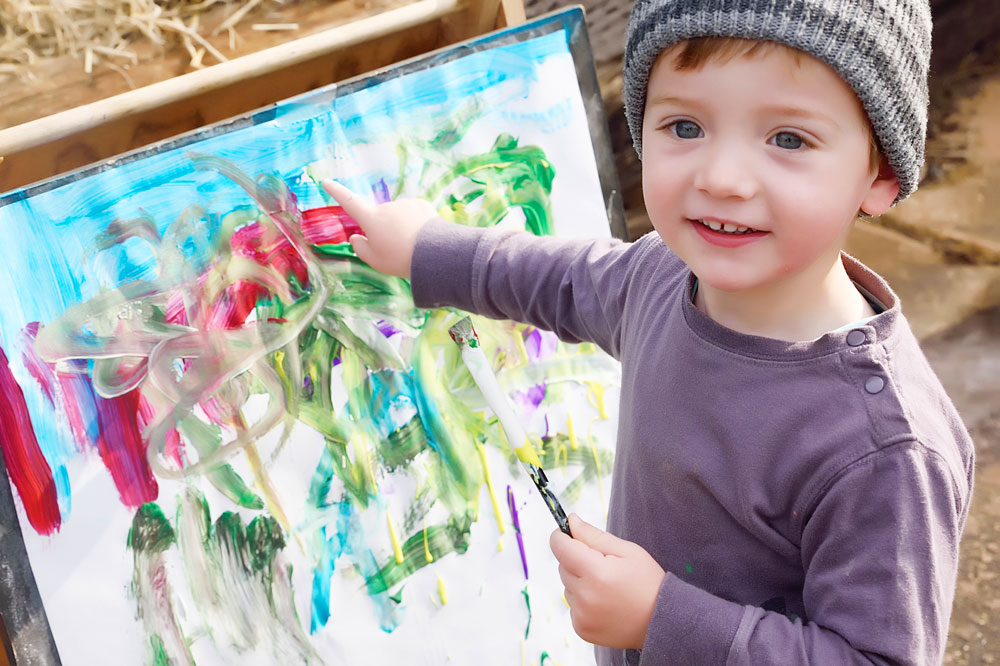Lesson 12: Work Samples and Creativity

Learning Outcomes
Upon completion of this lesson's material, students will be able to:
- Respond in appropriate and supportive ways to children’s artwork.
- Complete a work sample checklist, evaluating stages of creativity.
- Discuss the concept of product versus process artwork.
Teaching
Teaching: Read Chapter 10 in Week by Week.
Children love to create and express themselves through music, movement, artwork and construction such as block building. Teachers should nurture this as a tool for development. Developmentally appropriate classrooms should always have a variety of tools available for children to utilize to create. Easels, playdough, collage materials, musical instruments, blocks, writing/drawing utensils, puppets, etc should be stored where children can reach them and choose to use them independently.
Technology can be used to supplement and enhance creativity. Teachers can allow children to photograph creations such as block towers that cannot be physically kept. Videos of puppet or dramatic play encourage children to participate in imaginative games. Children can also use software to make songs or stories that can be shared with peers, teachers and parents. There are many possibilities!
Creative arts can be an important approach when working with children with special needs. The following article discusses methods for incorporating them into the curriculum in ways that support all of the children in a preschool classroom.
https://www.naeyc.org/files/tyc/file/MitchellVol2No2NEXT.pdf
Portfolios are an excellent way to organize and document learning. Dated work samples should be included to demonstrate accomplishments and learning outcomes. Portfolios can be used as assessment tools as well as shared with parents at conferences.
While reading this article, (http://www.earlychildhoodnews.com/earlychildhood/article_view.aspx?ArticleID=495) think about: How would I use portfolios to assess children’s understanding? Would I allow children to choose work to include? What types of artifacts would I include and would I be comfortable using technology?
Assessment
Lesson 12 Assignment
For this assignment you will be using the Work Samples Checklist form.
Observe a child engaged in the creative process using any type of materials. Complete the checklist while observing the child create. (text pg 272-273)
Familiarize yourself with the extensive checklist before completing it and determine if there is some prompting you can do. There may be a number of boxes you are not able to check. Write N/A in these boxes or leave them blank. DO try to write comments in the comments section if possible and applicable.
Submit the checklist and, with the child's permission, the work sample. If you cannot use their work sample, ask if you can take a picture or photocopy of it.
Complete the Summary: Describe the stage of creative development this work sample demonstrates (pg 277-280 text) and your supporting evidence of why you chose this stage. Also note which MELDS standard this represents from the Creative Arts section. What is one way the teacher could verbally support this child’s creative development, as stated on pg 289-290.
Obtain written permission from the appropriate person before you observe.
Lesson 12 Quiz
- Complete the exercise on page 291. List at least two ways you could react for each drawing.
Lesson 12 Discussion
Reread Topics in Observation on Page 288 in Chapter 10. React to this paragraph on Process vs. Product; how do you feel about this? Did reading this textbook and the chapters on child development change your thoughts on this dilemma?
